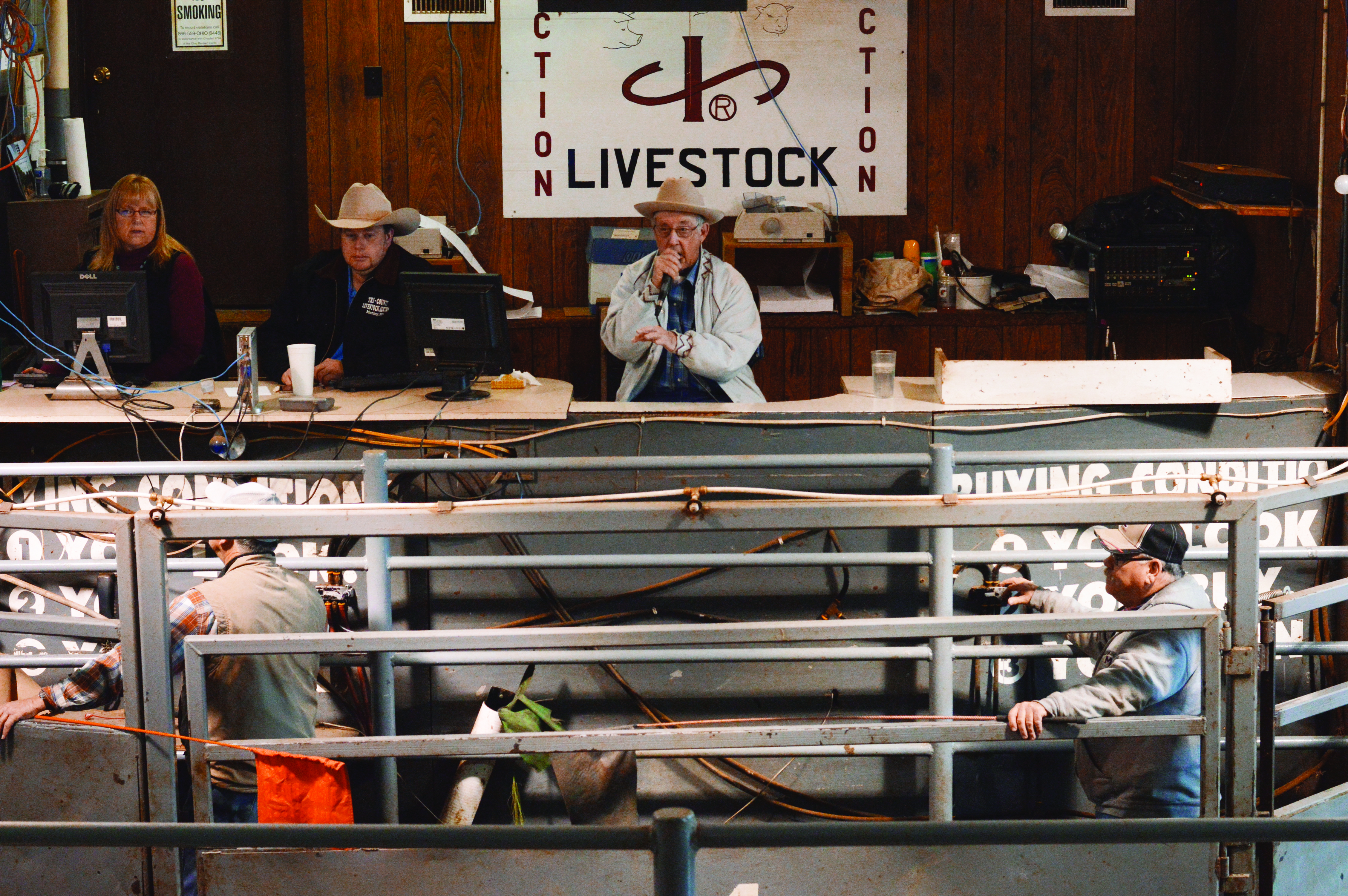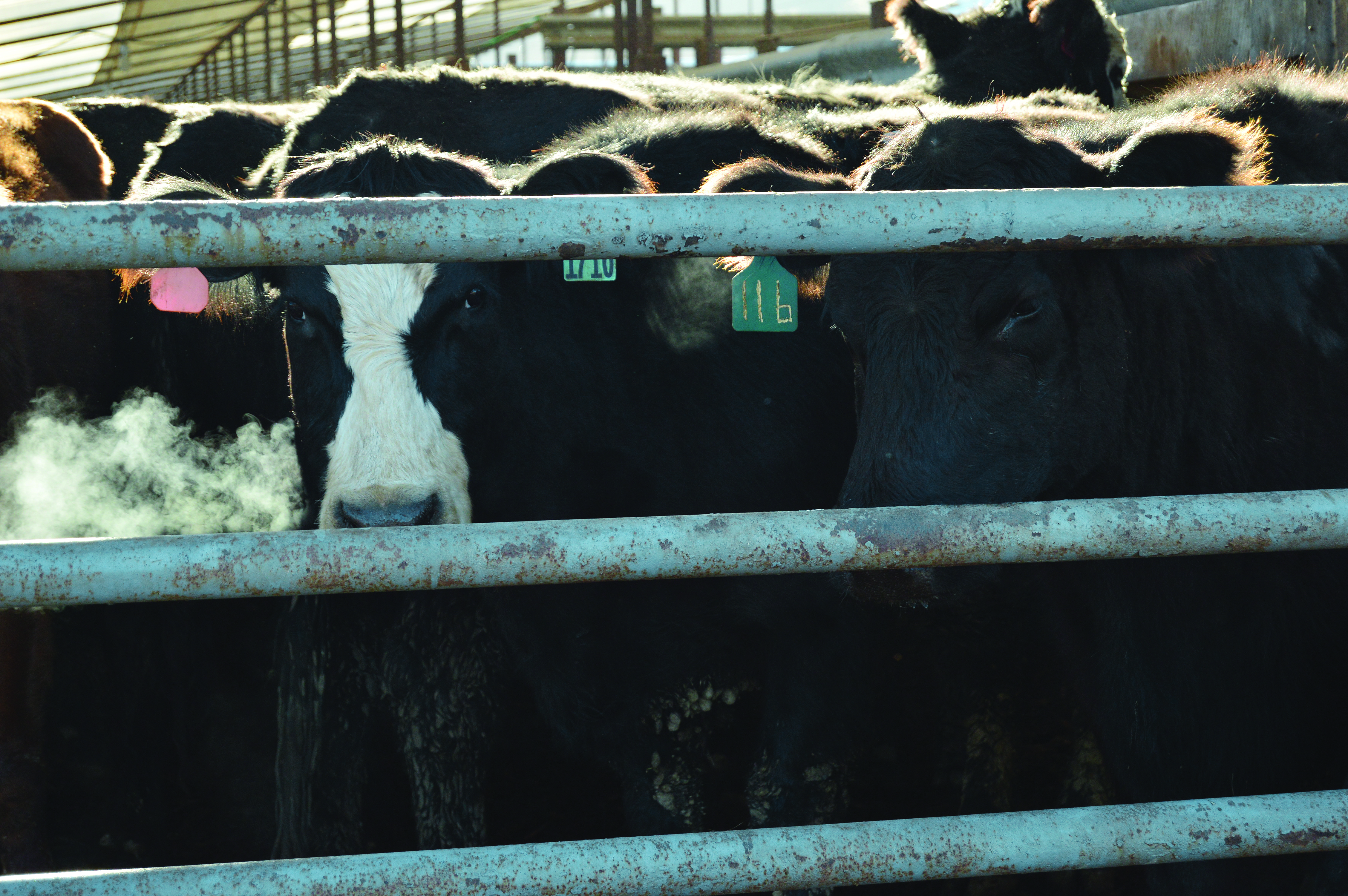
Twenty-six billion pounds of beef are produced every year in the U.S., according to the U.S. Department of Agriculture. In Muskingum County, the weekly Muskingum Livestock Auction sells thousands of cattle annually to the highest bidders to be manufactured into beef consumed by carnivores across the country.
In the barn, the chorus of mooing cows mixes with the hustle and bustle of the auction. The gravel parking lot fills with trucks of every color. Steel trailers stand empty, waiting to haul the cattle away.
Starting at 9 a.m., big buyers come ready to do the business of buying and selling cattle. Fat cattle, ranging anywhere from 1,150 pounds to 1,500 pounds, are sold first. Feeder cattle come next, but their sizes vary compared to their beefier predecessors.
Feeder cattle, for the most part, are bought in the hopes of beefing up and being re-sold as fat cattle. They range from as young as three months to a year old at most.
“Feeders, they’ll be any size. They’ll be as small as 200 lbs up to 1,000 lbs. They need fed,” Denny Ruff says, general manager of Muskingum Livestock Auction. “Finished cattle will be big, you know, stout looking. They’ve got to have some fat on them to grade.”
The auction’s livestock comes from Ohio, West Virginia and Pennsylvania. But the buyers are usually out-of-state large meat manufacturers. “They come from a long way because we got a good market, so they’re just hauling ‘em a long way,” Ruff says.
Cattle of all shapes and sizes begin to arrive at the auction bright and early on Tuesday mornings and filter in throughout the day and into Wednesday. Workers at the auction have their hands full tagging cattle and coaxing them into pens.
“On any given Wednesday, we move about 2,300 to 2,500 cattle,” Ruff says.
And does the auction move quickly. One by one, each cow enters the ring for auction as the auctioneer rattles off its ideal bovine characteristics. The auctioneer has a job that never seems to cease. In one full breath, the auctioneer in his cowboy hat builds a rhythmic pace that is hard to keep up with. His motor mouth keeps a beat that takes years of practice but is necessary to keep the auction moving and grooving.
“They’re just hollering numbers basically,” Ruff says, unfazed by the fast pace. “There’s a couple of ‘little guys’ who buy on occasion, but usually it’s the big processors buying.”
Livestock sold right out of Muskingum County travels hundreds of miles to make its way onto dinner tables across the U.S. “For the most part, we’re probably the biggest cattle market in the state of Ohio,” Ruff says.
Ruff, who has been at Muskingum Livestock Auction since 1987 and general manager since 1999, is no stranger to the task of caring for and selling cattle. “I grew up on a farm in Fairfield County,” Ruff says. “I just basically started part-time right out of high school.”
Standing tall and thick-set in work overalls and boots, Ruff has turned his farm upbringing into a career and he knows his business inside and out. “That’s about all I know, livestock,” Ruff says.
